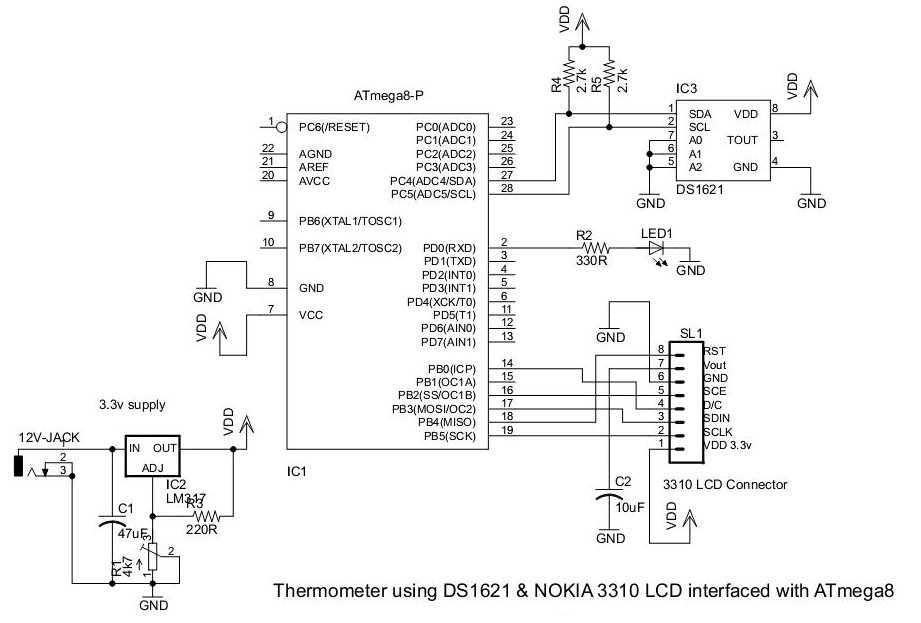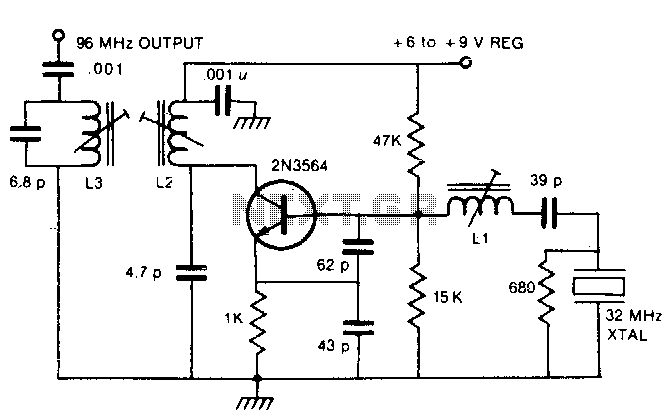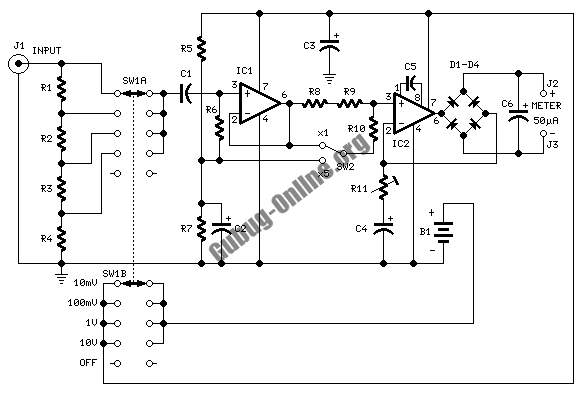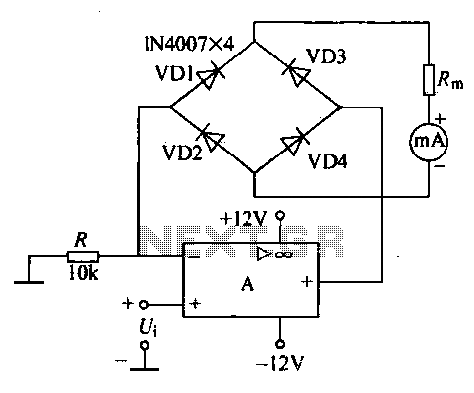
1300 Mhz Frequency meter with prescaler

Having found a u664b prescaler chip (Telefunken) from an old TV tuner, I decided to build a valid frequency counter using PIC16F84. The prescaler I use is able to divide by 64 every frequency from 30 to 1300 MHz. The original project is from Peter Halicky, but as he used a SAB6456 prescaler (divider by 256). More: I had to change the code to adjust the gating time to my different divider factor (64) and also to my 4.8 MHz crystal (he used 10 MHz crystal). However, the U664b is perfectly compatible with SAB6456, so you can substitute it pin to pin. The measuring is divided in
The project involves the construction of a frequency counter utilizing the U664B prescaler chip, which is capable of dividing input frequencies from 30 MHz to 1300 MHz by a factor of 64. This allows the circuit to handle a wide range of frequencies effectively. The choice of the PIC16F84 microcontroller serves as the core processing unit, providing the necessary control and measurement capabilities.
The U664B prescaler functions by taking an incoming high-frequency signal and reducing its frequency by the specified division factor. This is crucial for accurate frequency measurement, as the microcontroller can only process lower frequency signals. The compatibility of the U664B with the SAB6456 prescaler allows for a straightforward integration into existing designs, as the pin configurations are identical.
In adapting the original project by Peter Halicky, modifications were made to the firmware to accommodate the U664B's division factor and the different crystal oscillator frequency. The original design utilized a 10 MHz crystal oscillator, while this implementation employs a 4.8 MHz crystal oscillator. The code adjustments ensure that the timing and gating intervals are correctly calibrated for the new operating frequencies, which is essential for maintaining measurement accuracy.
The overall architecture of the circuit involves the prescaler connected to the input frequency source, followed by the microcontroller that processes the divided signal. The microcontroller's firmware is programmed to handle the counting of pulses over a specified gating period, allowing for the display of the corresponding frequency. The output can be interfaced with a display module to present the measured frequency in a user-friendly format.
This frequency counter design is suitable for various applications, including amateur radio, electronics testing, and educational purposes, providing a practical tool for frequency measurement across a broad spectrum of signals.Having found an u664b prescaler chip (Telefunken) from an old tv-tuner , I decided to build a valid frequency counter using pic16f84 , the prescaler I use is able to divide by 64 every frequency from 30 to 1300 MHZ. The original project is from Peter Halicky but as he used a sab6456 prescaler (divider by 256) I had to change the code to adjust the gating time to my different divider factor ( 64) and also to my 4.8 MHZ xtal (he use 10 MHz xtal). However the U664b is perfectly compatible to SAB6456 so you can substitute it pin to pin. The measuring is divided in 🔗 External reference
The project involves the construction of a frequency counter utilizing the U664B prescaler chip, which is capable of dividing input frequencies from 30 MHz to 1300 MHz by a factor of 64. This allows the circuit to handle a wide range of frequencies effectively. The choice of the PIC16F84 microcontroller serves as the core processing unit, providing the necessary control and measurement capabilities.
The U664B prescaler functions by taking an incoming high-frequency signal and reducing its frequency by the specified division factor. This is crucial for accurate frequency measurement, as the microcontroller can only process lower frequency signals. The compatibility of the U664B with the SAB6456 prescaler allows for a straightforward integration into existing designs, as the pin configurations are identical.
In adapting the original project by Peter Halicky, modifications were made to the firmware to accommodate the U664B's division factor and the different crystal oscillator frequency. The original design utilized a 10 MHz crystal oscillator, while this implementation employs a 4.8 MHz crystal oscillator. The code adjustments ensure that the timing and gating intervals are correctly calibrated for the new operating frequencies, which is essential for maintaining measurement accuracy.
The overall architecture of the circuit involves the prescaler connected to the input frequency source, followed by the microcontroller that processes the divided signal. The microcontroller's firmware is programmed to handle the counting of pulses over a specified gating period, allowing for the display of the corresponding frequency. The output can be interfaced with a display module to present the measured frequency in a user-friendly format.
This frequency counter design is suitable for various applications, including amateur radio, electronics testing, and educational purposes, providing a practical tool for frequency measurement across a broad spectrum of signals.Having found an u664b prescaler chip (Telefunken) from an old tv-tuner , I decided to build a valid frequency counter using pic16f84 , the prescaler I use is able to divide by 64 every frequency from 30 to 1300 MHZ. The original project is from Peter Halicky but as he used a sab6456 prescaler (divider by 256) I had to change the code to adjust the gating time to my different divider factor ( 64) and also to my 4.8 MHZ xtal (he use 10 MHz xtal). However the U664b is perfectly compatible to SAB6456 so you can substitute it pin to pin. The measuring is divided in 🔗 External reference





